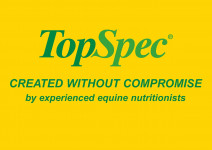Posted: 8th April 2020 | Back to news feed

Diet is one of the most important things to consider when managing a laminitic; it is crucial in the recovery from laminitis and should help to reduce the risk of further episodes.
It is well-established that laminitic horses and ponies require a diet that is low in sugar and starch. Recent research is helping to improve our understanding as to why this is but also why correct dietary management alone may not eliminate laminitis permanently.

Photo: The Author
Risk factors for laminitis
Laminitis is multifactorial i.e. it is rarely caused by one factor alone, and thinking about the factors that can contribute will help to establish the most suitable regime for a laminitic. If these factors can be managed, and/or treated prior to an attack, it may help to prevent laminitis from occurring in the first place.
(1) Hormonal Dysfunction has been identified as one of the most common contributing factors to laminitis. Insulin Dysregulation (ID) or Equine Metabolic Syndrome (EMS) and Pars Pituitary Intermedia Dysfunction (PPID or Cushing’s) have been diagnosed by vets in up to 90% of laminitis cases.
These conditions can help to explain why certain horses and ponies are more susceptible to laminitis than others. For those that suffer from (or are prone to) these hormonal conditions, restricting sugar and starch intake is essential.
A different form of hormonal effect can come from certain medication (e.g. corticosteroids) which can increase the risk of laminitis, particularly in horses and ponies with PPID/ID. Stress is another factor with hormonal involvement that can contribute.
(2) Carbohydrate Overload is caused by an excessive intake of sugar and starch. Grass that is high in water-soluble carbohydrates (e.g. spring/autumn/frosted grass), hard feeds high in starch (e.g. cereal-based feeds), and the use of highly molassed feeds can cause a rise in insulin levels in the blood. This response is exaggerated when ID is present and it is thought that persistently high levels of blood insulin may precipitate laminitis.
The microbial balance of the hindgut can also be affected by excessive consumption of sugar and starch, causing the hindgut to become more acidic. This can allow ‘Laminitis Trigger Factors’ to leak into the bloodstream, ultimately contributing to laminitis.
(3) Obesity certainly increases the risk of laminitis but it is not agreed how. There may be a link between obesity and hormonal dysfunction (EMS/ID). However, not all horses and ponies with EMS are obese. Increased physical forces placed on the laminae, from carrying excessive weight, can also contribute.
The bottom line is that overfeeding calories and insufficient exercise play a big part. The inability to exercise until the laminae are stable, emphasises the importance of an effective weight loss regime for horses and ponies that are overweight.
(4) Toxin Release, which can occur as a consequence of sepsis following e.g. retained placenta, colic, colitis or pneumonia, has long been known to be associated with laminitis. Although this type of laminitis can occur without a nutritionally-related cause, dietary management is still worthwhile to minimise other potential contributing factors.
(5) Traumatic and Supporting Limb Laminitis is not caused by incorrect diet. Pressure, blocking the capillary blood supply to the foot, is the issue that needs to be managed but controlling any other complicating factors is also important.
What to feed?
When a horse or pony first develops laminitis, the final trigger of the attack needs to be removed. This is often due to an excessive intake of sugar and/or starch from e.g. spring grass or large meals containing cereal grains. As a disturbance of the microbial balance in the hindgut can also be involved in this multifactorial problem, it is sensible to feed to re-establish the correct hindgut population where fibre-digesting bacteria dominate and sugar/starch digesting bacteria are minimised.
In most cases, low Non-Structural Carbohydrate (NSC) hay (e.g. late-cut meadow hay) should initially be offered ad-lib, to help re-establish a normal hindgut microbial balance. This can continue for horses and ponies that are underweight. However, for those that are overweight, hay should be gradually reduced after the first week to a maximum of 1.5% (as fed) of ideal bodyweight.
Hay can be analysed if its nutritional value is unknown but, in the meantime, soaking the hay in plenty of cool, fresh water for 3 to 12 hours is advisable to help reduce its sugar and calorie content. A low sugar/starch chop can be used as a hay replacer if appropriate hay cannot be sourced and/or soaking hay is not an option.
Hard feeds should also be kept low in sugar and starch and cereal-grain-free. Using a top-specification, pelleted or powdered multi-supplement is advisable to balance the diet for micronutrients. A broad-spectrum supplement, hoof supplement, high levels of antioxidants and pre- and probiotics are all important. These can all be found in one product that is widely available from feed stores.
I recommend speaking to an experienced nutritionist to help adapt these recommendations to meet the specific requirements of your horse or pony.
By Anna Welch BVSc, BSc, MRCVS. Veterinary Nutrition Director, TopSpec.
TopSpec can be contacted, free of charge, on their Multiple Award-Winning-Helpline Tel: 01845-565030
The Equestrian Index newsfeed is compiled from articles submitted by advertising members and expresses the opinions of those members. Watsons Directories Ltd shall not be held liable for any inaccuracies or mis-statements therein.